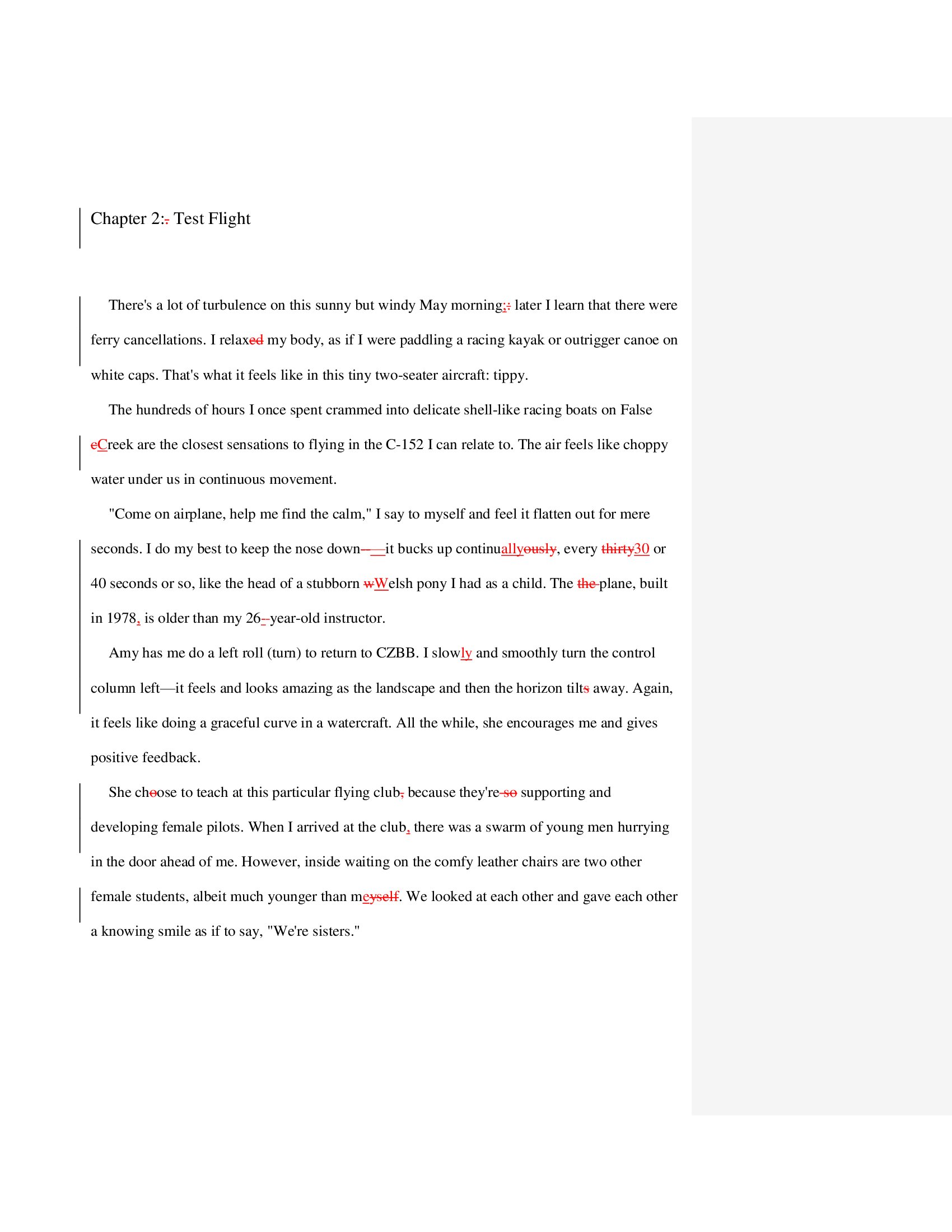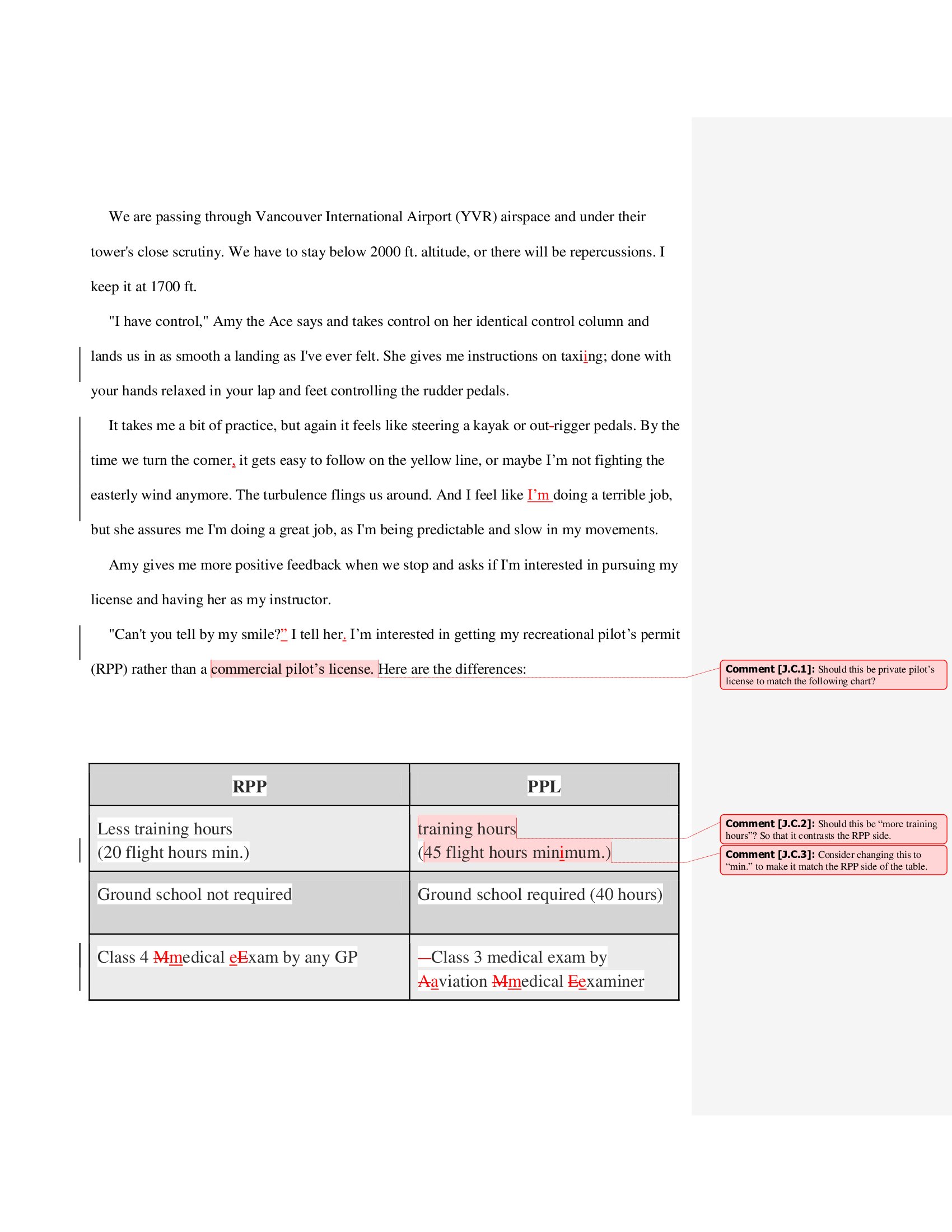Copy Editing
ensure your text is correct, accurate and consistent
Copy editing is often the first thought when people think about editing, but it goes beyond being a spell checker. First, it corrects errors in spelling, grammar, punctuation and usage. This means that you won’t be caught using there instead of their, and you’ll avoid the dreaded comma splice.
Next, this editing stage focuses on the accuracy of information. This could mean confirming URLs and quotations, verifying links and table of contents organization, or identifying numerical errors. You don’t want dead links, mismatched chapter headers or wrong unit conversions to cause your readers to lose trust in you.
Finally, a copy edit applies a consistent editorial style throughout your document through developing and applying a style sheet. This ensures that you always use the same spelling for words with variations and that you always leave out (or in) the Oxford comma.
I am able to edit using whatever style guide you prefer, but I mostly use Chicago Manual of Style and Editing Canadian English.
Don’t Distract your readers with typos; Get a copy edit


Know the difference
Issues Resolved in Copy editing:
Errors in spelling, grammar, punctuation and usage
Inconsistent terminology, logic and mechanics
Inaccurate information
Missing citations
Non-adherence to accepted style guide
Issues resolved in Stylistic Editing:
Ambiguous paragraph and sentence length
Poor transitions between paragraphs and sentences
Redundant phrasing or repeated words
Unclear tone
Bland language
Inappropriate word choice for intended audience
Confusing lists and tables


